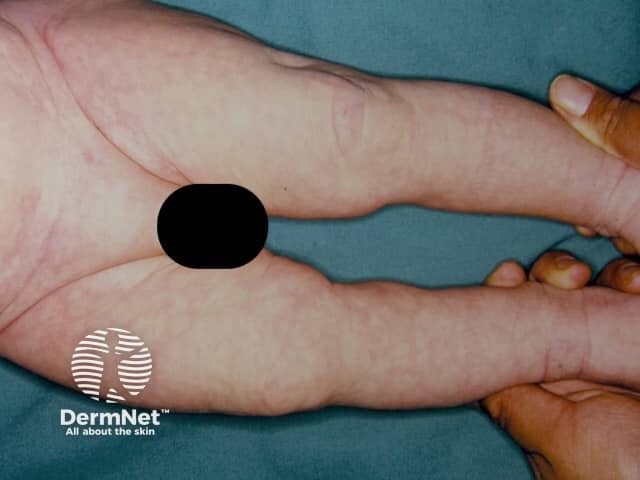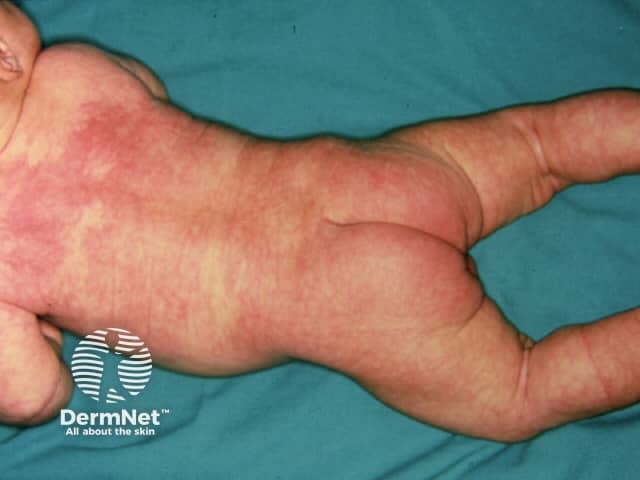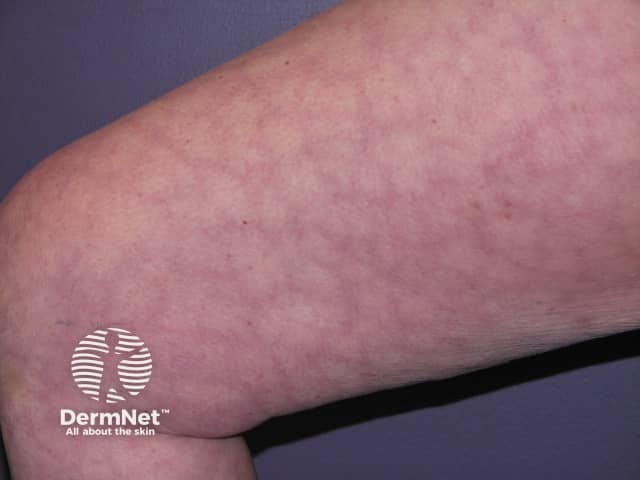Main menu
Common skin conditions

NEWS
Join DermNet PRO
Read more
Quick links
Cutis marmorata is a condition where the skin has a pinkish blue mottled or marbled appearance when subjected to cold temperatures. Rewarming usually restores the skin to its normal appearance.

Cutis marmorata

Cutis marmorata

Cutis marmorata
Cutis marmorata is distinct from cutis marmorata telangiectatica congenita (CMTC).
Cutis marmorata occurs in about 50% of children and is typically seen throughout infancy. Adults may also be affected.
The mottled appearance of cutis marmorata is caused by superficial small blood vessels in the skin dilating and contracting at the same time. Dilation creates the red colour of the skin whilst contraction produces a pale appearance. This phenomenon is most pronounced when the skin is cooled. The reasons for the reaction are not fully understood.
There is no treatment for cutis marmorata. It is generally a benign condition that improves with age.
Book: Textbook of Dermatology. Ed Rook A, Wilkinson DS, Ebling FJB, Champion RH, Burton JL. Fourth edition. Blackwell Scientific Publications.